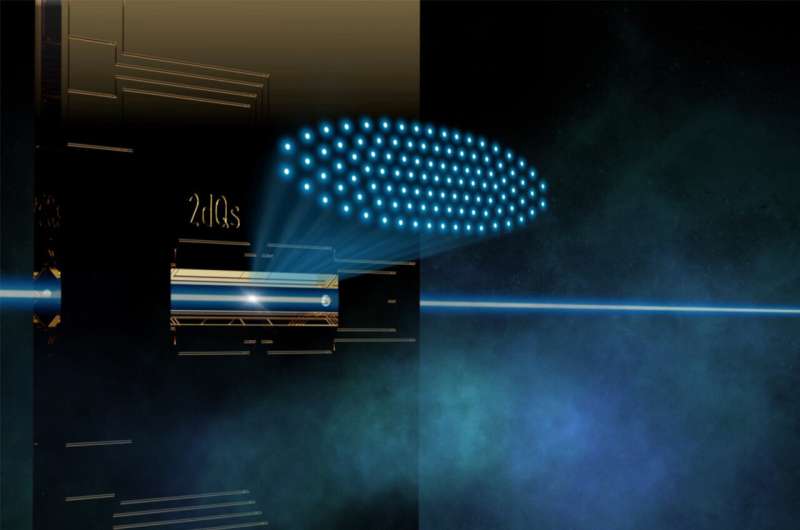This article has been reviewed according to Science X's editorial process and policies. Editors have highlighted the following attributes while ensuring the content's credibility:
fact-checked
peer-reviewed publication
trusted source
proofread
Correlation spectroscopy research shows network of quantum sensors boosts precision

Quantum sensor technology promises even more precise measurements of physical quantities. A team led by Christian Roos at the University of Innsbruck has now compared the signals of up to 91 quantum sensors with one another and thus successfully eliminated the noise caused by interactions with the environment.
The quantum systems employed in quantum technologies are also very sensitive: Any interaction with the environment can induce changes in the quantum system, leading to errors. However, this remarkable sensitivity of quantum systems to environmental factors actually represents a unique advantage. This sensitivity enables quantum sensors to surpass conventional sensors in precision, for example when measuring magnetic or gravitational fields.
Noise cancellation using correlation spectroscopy
The delicate quantum properties needed for sensing can be covered up by noise—rapid interactions between the sensor and the environment that disrupt the information within the sensor, rendering the quantum signal unreadable. In a new paper published in Physical Review X, physicists led by Christian Roos from the Department of Experimental Physics at the University of Innsbruck, together with partners in Israel and the U.S., present a method for making this information accessible again using "correlation spectroscopy."
"Here, the key idea is that we do not just use a single sensor, but a network of up to 91 sensors, each consisting of a single atom," explains Helene Hainzer, the first author of the paper. "Since noise affects all sensors equally, analyzing simultaneous changes in the states of all sensors allows us to effectively subtract the environmental noise and reconstruct the desired information.
"This allows us to precisely measure magnetic field variations in the environment, as well as determine the distance between the quantum sensors." Beyond that, the method is applicable for other sensing tasks and within diverse experimental platforms, reflecting its versatility.
Precision increases with the number of sensors
While correlation spectroscopy has been demonstrated previously with two atomic clocks, allowing for a superior precision in measuring time, "our work marks the first application of this method on such a large number of atoms," says Roos. "In order to establish experimental control over so many atoms, we built an entirely new experimental setup over several years."
In their publication, the Innsbruck scientists show that the precision of the sensor measurements increases with the number of particles in the sensor network. Notably, entanglement—conventionally used to enhance quantum sensor precision but hard to create in the laboratory—fails to provide an advantage compared to the multi-sensor network.
More information: H. Hainzer et al, Correlation Spectroscopy with Multiqubit-Enhanced Phase Estimation, Physical Review X (2024). DOI: 10.1103/PhysRevX.14.011033
Journal information: Physical Review X
Provided by University of Innsbruck


















